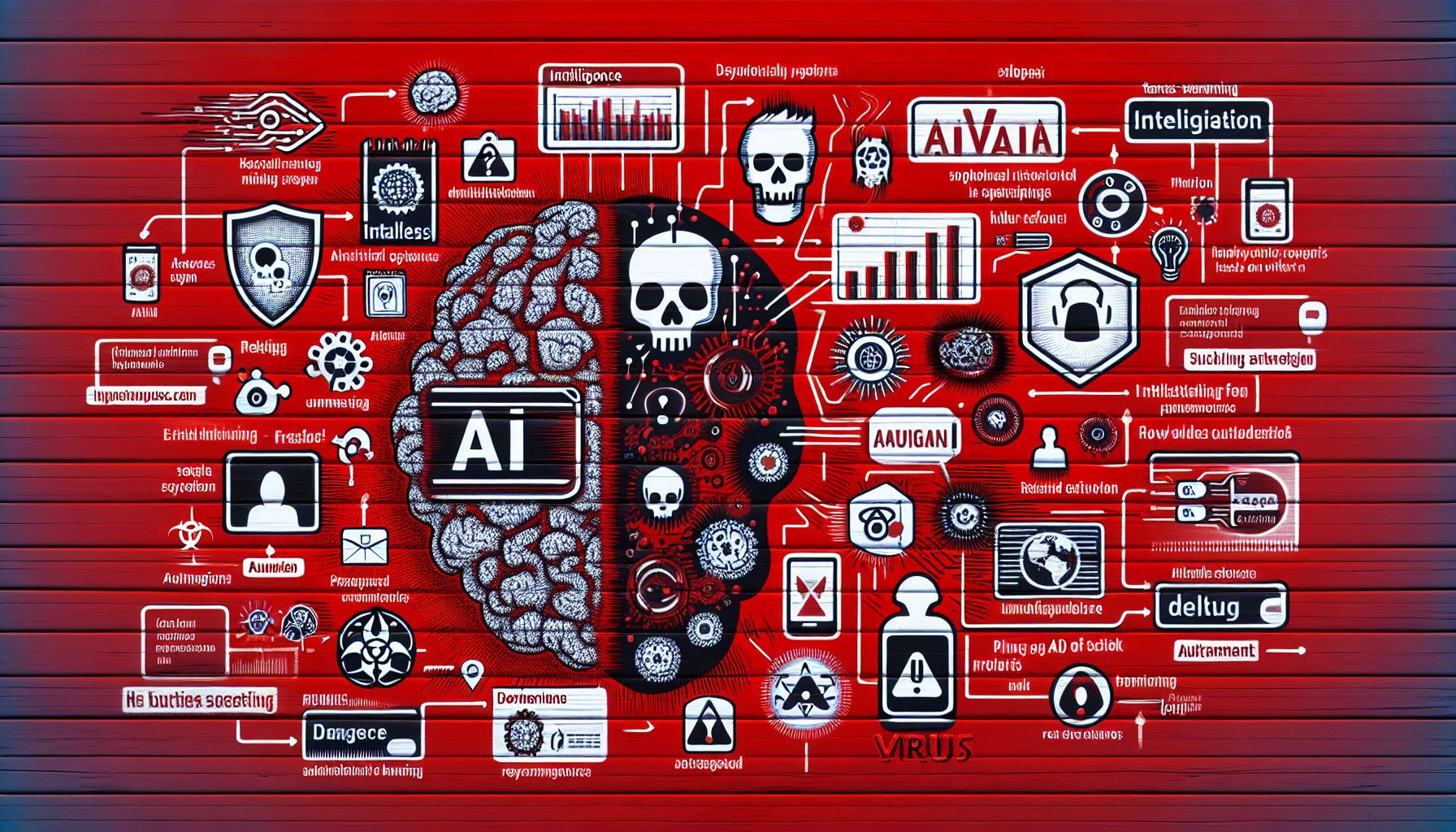The Ascendance of AI and the Cybersecurity Hazard: How Cybercriminals Utilize AI’s Fame
As artificial intelligence (AI) keeps transforming the technology sector, its extensive popularity has captured the interest of cybercriminals. Recent findings emphasize advanced tactics where hackers exploit AI’s allure to deceive users into downloading malware. This article delves into the strategies used by assailants, the associated risks, and ways to defend against these threats.
Hacking Strategies: AI as Lure
AI-Narrated Content on Social Platforms
A recent phenomenon entails hackers leveraging social media channels such as TikTok to share videos narrated by AI. These presentations mislead audiences into downloading malware, cloaked as guidance for activating pirated software. The approach takes advantage of users’ curiosity and confidence in AI to breach their systems.
Fabricated AI Tools and Applications
Hackers also construct counterfeit AI tools, advertising them as valuable assets for personal or professional purposes. Reports from cybersecurity organizations like Talos and Google’s Mandiant reveal how hackers entice victims into downloading malware applications by pretending they are AI solutions. These programs promise revolutionary advantages but instead deliver harmful malware.
Case Analyses: UNC6032 and the Art of Deception
UNC6032’s Social Media Strategy
A collective known as UNC6032, situated in Vietnam, employed social media advertisements to promote real AI video-generating software like Luma AI and Canva Dream Lab. However, the links redirected users to counterfeit sites where malware was downloaded. This instance highlights the perils of placing trust in offers that appear too good to be true from unknown sources.
The Talos Analysis: Camouflaged Malware
Talos’ analysis emphasizes three distinct types of malware disguised as premium AI offerings. Significantly, CyberLock and Lucky_Gh0$t are ransomware, while Numero disrupts Windows user interface elements. These malicious applications take advantage of users’ aspirations for state-of-the-art AI tools, resulting in serious data infringements and financial losses.
The Effect of AI-Driven Cyber Assaults
Mandiant’s inquiry indicates that UNC6032’s misleading advertisements reached more than two million users throughout Europe. While the precise number of impacted individuals is uncertain, the potential magnitude is concerning. The exploitation of AI’s popularity as a method of attack necessitates increased awareness among users.
Safeguarding Against AI-Related Cyber Hazards
Steering Clear of Questionable Sources
To reduce risk, refrain from downloading AI applications from unverified origins. Stick to trustworthy platforms and conduct thorough research on any unfamiliar software prior to installation. Free AI tools like ChatGPT or Gemini can assist in verifying the credibility of dubious sites.
Routine Data Backups and Password Safeguarding
Regularly back up data to defend against ransomware incursions. Utilize password managers to protect sensitive data, avoid password duplication, and periodically refresh login credentials. These habits bolster cybersecurity resilience.
Conclusion
The appeal of AI has rendered it a prime target for cybercriminals eager to capitalize on its popularity. By remaining informed about the latest hacking strategies and implementing strong cybersecurity practices, individuals and businesses can shield themselves from these evolving dangers. As AI continues to influence the future, vigilance and caution remain essential in navigating the digital realm.
Q&A: Grasping AI-Related Cyber Hazards
Q1: Why do hackers focus on AI tools?
A1: Hackers concentrate on AI tools due to their increasing popularity and the trust users place in them, making it simpler to mislead individuals into downloading malware.
Q2: How can I spot a counterfeit AI application?
A2: Verify the origin, research the application, read reviews, and steer clear of offers that appear too enticing. Use reputable platforms for downloads.
Q3: What should I do if I unintentionally download malware disguised as an AI tool?
A3: Disconnect from the internet, execute antivirus software, and seek professional assistance if needed. Regularly backup data to reduce possible losses.
Q4: How do ransomware assaults function?
A4: Ransomware encrypts your files, demanding payment for decryption. It can lock devices and lead to significant data loss without backups.
Q5: Are there safe complimentary AI offerings available?
A5: Yes, products like ChatGPT and Gemini provide safe, free AI experiences. Always verify that downloads are sourced from reputable providers.
Q6: What role do social media channels play in these assaults?
A6: Social media channels are utilized to spread deceptive ads and links, directing users to malicious sites. Platforms are becoming increasingly proactive in removing such material.
Q7: How can businesses defend themselves against these dangers?
A7: Establish comprehensive cybersecurity policies, educate staff, use dependable software, and routinely assess and update security protocols.